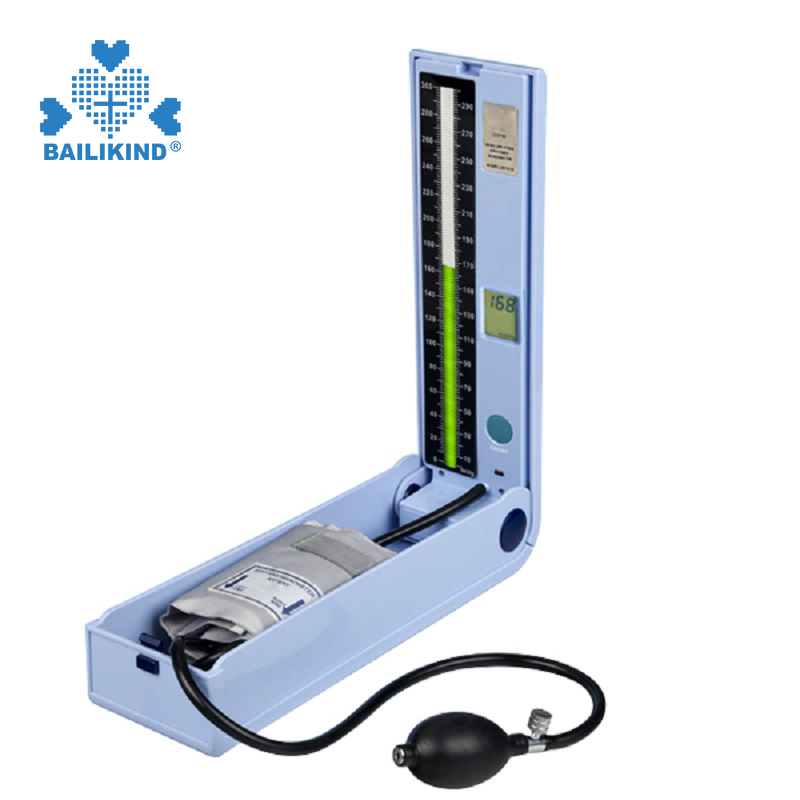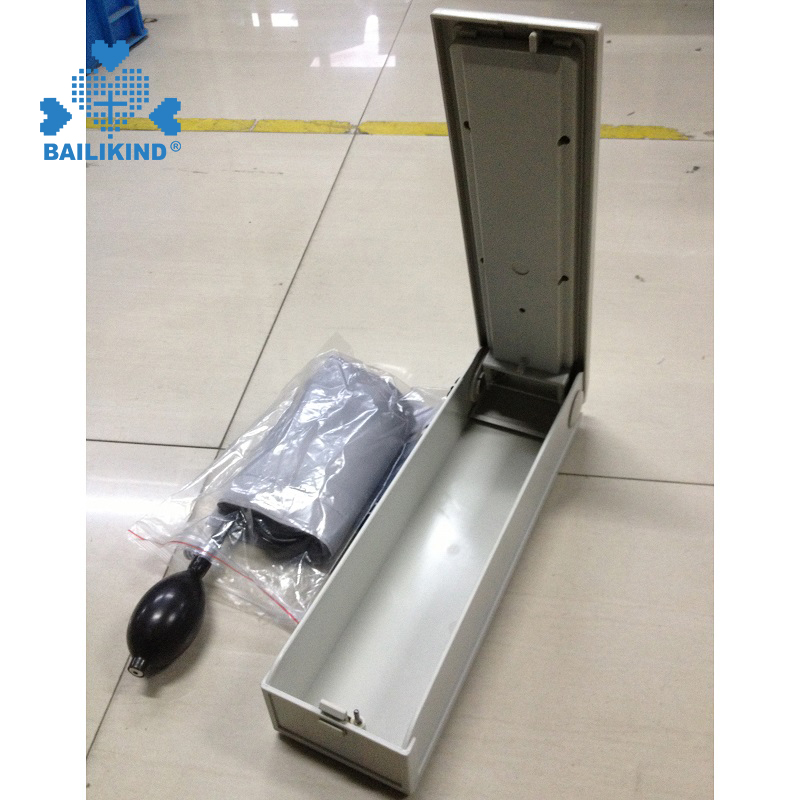The method of use Mercury Sphygmomanometer
2021-12-17
Baili Medical Suppliers(Xiamen) Co., is a professional medical devices supplier based in Xiamen, China. Our main products: Protective Equipment, Hospital Equipment, First Aid Equipment, Hospital and Ward Facilities.
The mercury sphygmomanometer is a type of sphygmomanometer, and it is a sphygmomanometer whose main structure is mercury. It was born in England in 1928. The earliest sphygmomanometer was used to measure the blood pressure of horses, and later it was used to measure the blood pressure of the human body.
Usage
1. Reduce the physiological changes during blood pressure measurement. The blood pressure measurement should be performed in a quiet and warm room to ensure that the patient does not eat, smoke, drink coffee or fill the bladder within a short period of time, and explain the method of blood pressure measurement to reduce the patient’s anxiety feel.
2. When the patient takes the sitting position, the back should be leaned against the back of the chair, the legs should not be crossed, and the feet should be flat. Regardless of whether the patient is sitting or supine, the midpoint of the upper limbs should be at the level of the heart, and rest for 5 minutes after the posture.
3. Use a mercury sphygmomanometer as much as possible. If you use a surface-free sphygmomanometer, check whether the pointer is at the 0 position at the beginning and after the end of the blood pressure measurement, and avoid some small debris from sticking the pointer at the 0 position, and every 6 months Calibrate the levelless sphygmomanometer once; align the middle of the mercury sphygmomanometer and the dial of the levelless sphygmomanometer to your eyes.
4. The air bag of the cuff should be able to surround 80% of the upper arm and 100% of the child's upper arm, and the width should cover 40% of the upper arm.
5. The cuff should be comfortably tied to the patient's bare upper elbow for one inch, and the balloon should be placed above the brachial artery. When inflated, the systolic blood pressure can be estimated by touching the fluctuation of the brachial artery, and beating when the systolic pressure is measured. Will disappear.
6. Place the auscultation head on the artery at the lower edge of the cuff, and quickly inflate the cuff to reach 2.67~4.00kpa above the blood pressure estimated by the pulse, and then open the deflation valve to make the airbag flow at 0.267~0.400kpa per second Deflate at a speed.
7. Pay attention to the appearance of the first sound (Phase I of korotkoff), when the voice changes (Phase IV) and when the sound disappears. When you hear the sound of korotkoff, you should deflate at a rate of 0.267kpa per beat.
8. When you hear the last korotkoff sound, you should continue to deflate slowly to 1.33kpa to find out whether there is an auscultation gap, and then deflate at an appropriate speed.
Precautions
1. Because of the direction of blood flow, the blood pressure measured by the left hand and the right hand will usually be different; usually the blood pressure value of the right hand will be slightly higher than that of the left hand, but the difference between 10 and 20 mmHg is normal, but the record should be high. The measured data shall prevail. If the difference between the hands is more than 40-50mmHg, it may be that the blood vessel is blocked. It is best to consult a doctor to find out the cause.
2. It is not advisable to measure blood pressure only once. You should measure your blood pressure several times a day and record it so as to understand the changes in your blood pressure within a day.
3. It is best to measure blood pressure in a relaxed mood in your own home, because when some people measure their blood pressure in a medical institution, they will feel nervous when facing medical staff in white clothes, which will increase blood pressure. Hypertension", measuring blood pressure at home can overcome this situation.
4. Traditional mercury sphygmomanometer will be affected by thermal expansion and contraction, and should be calibrated to zero on average every six months.






